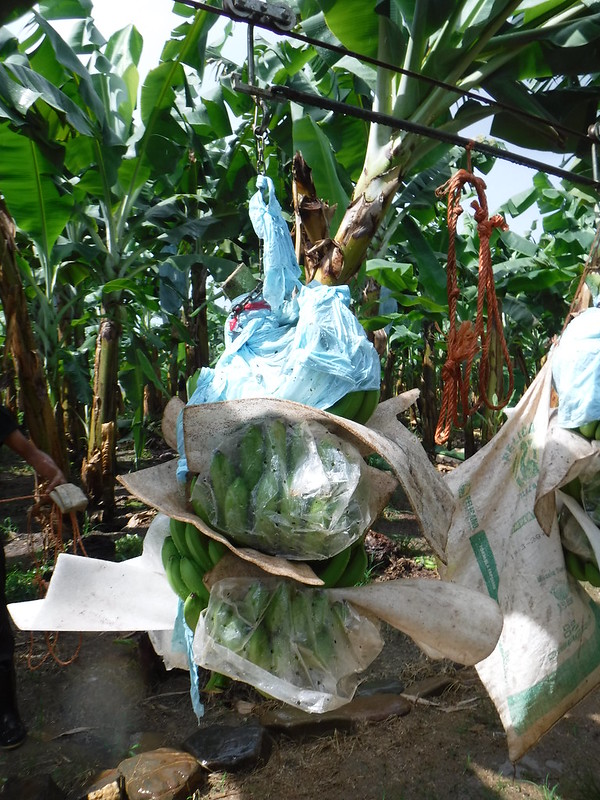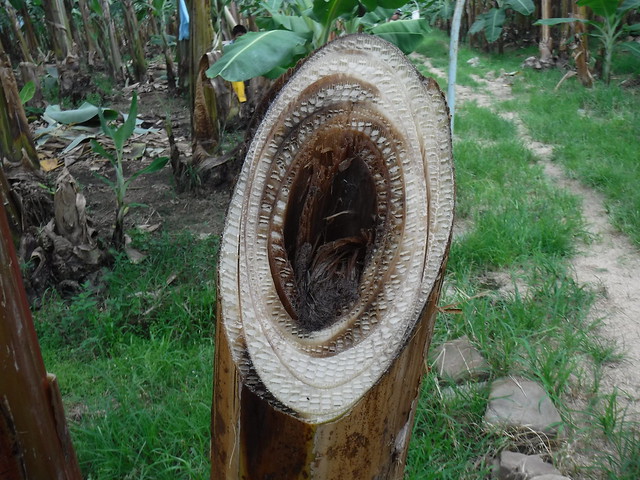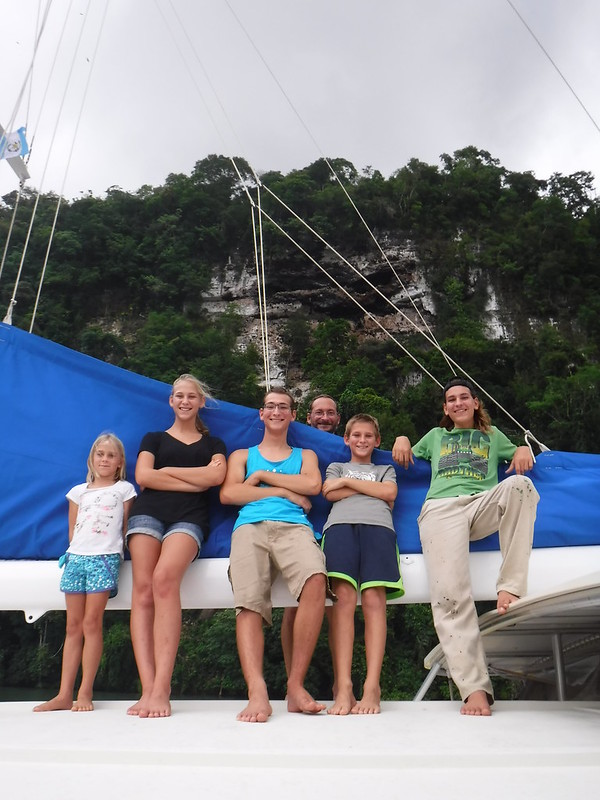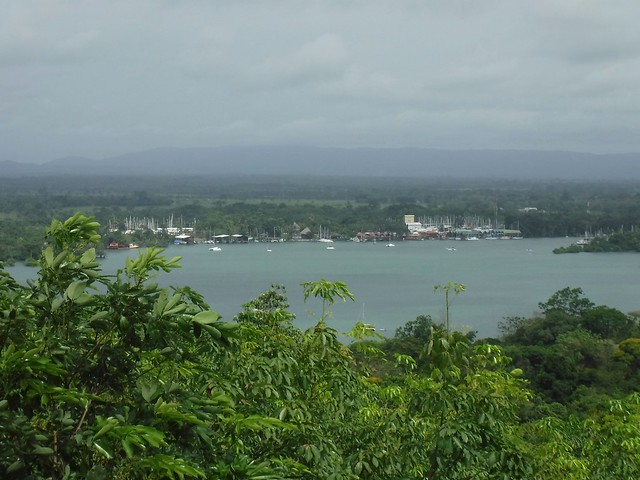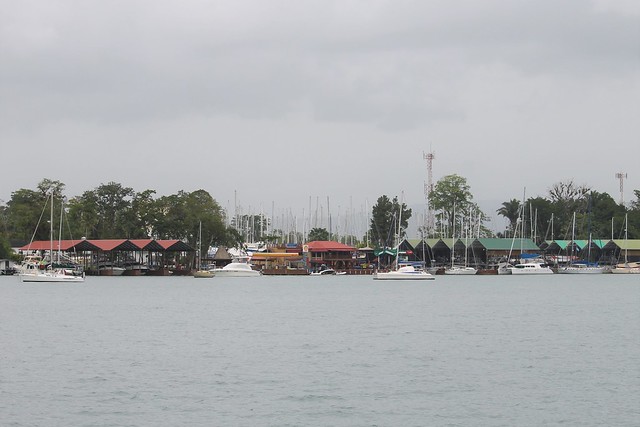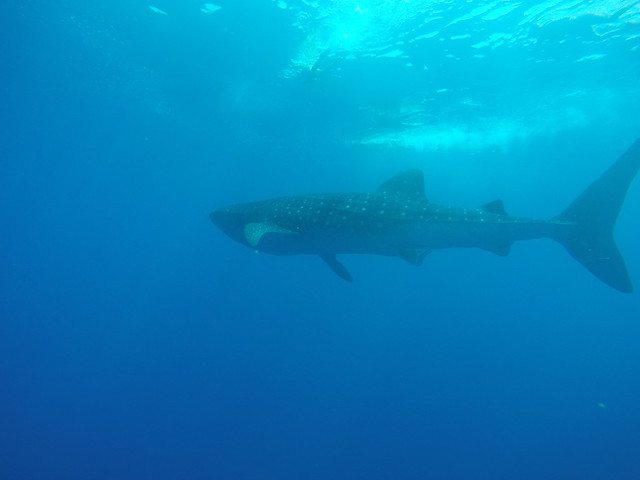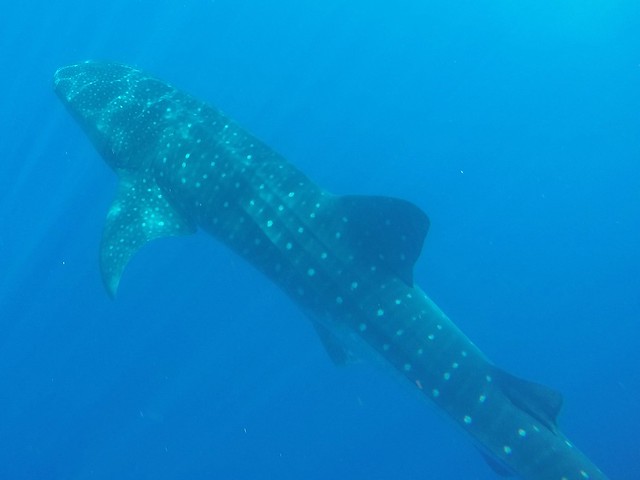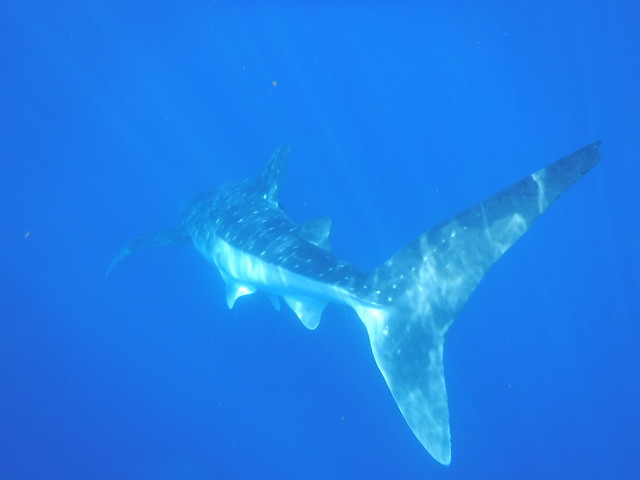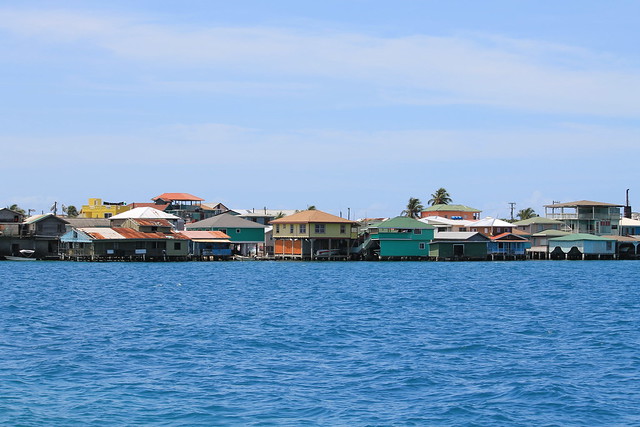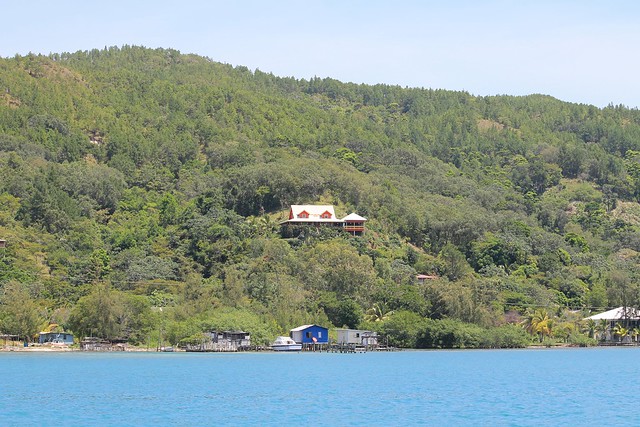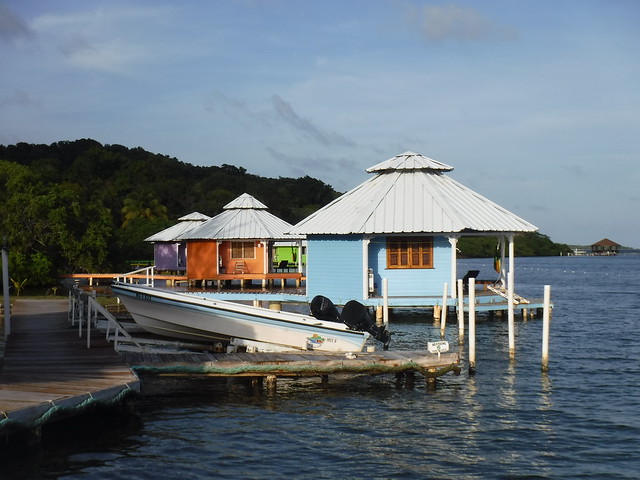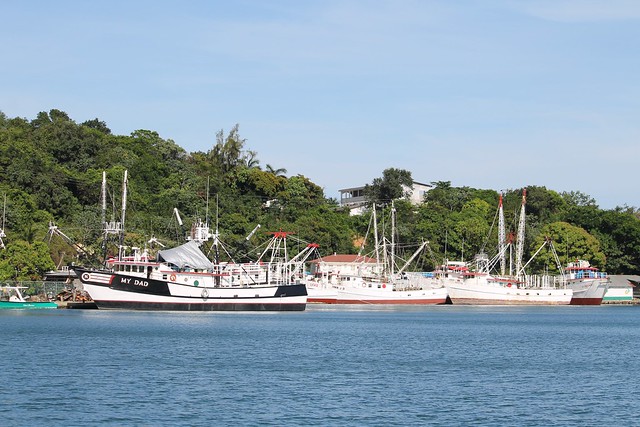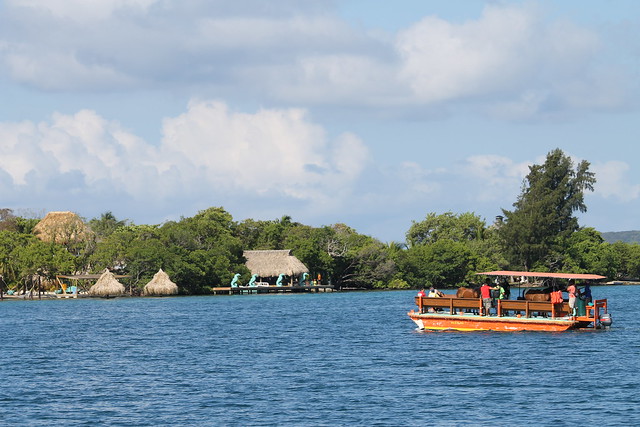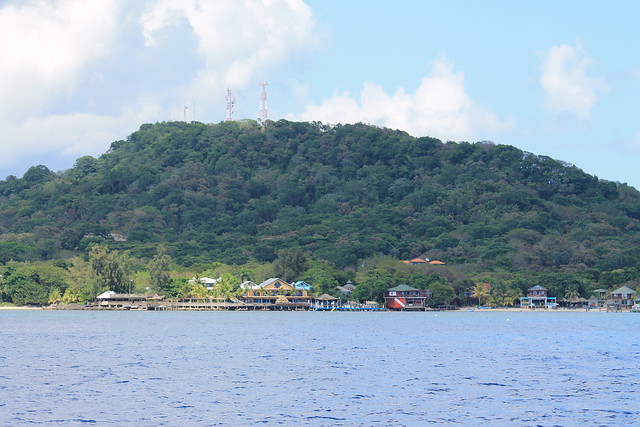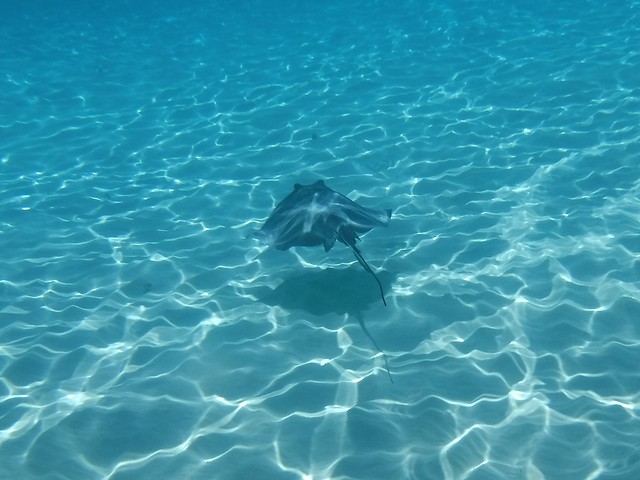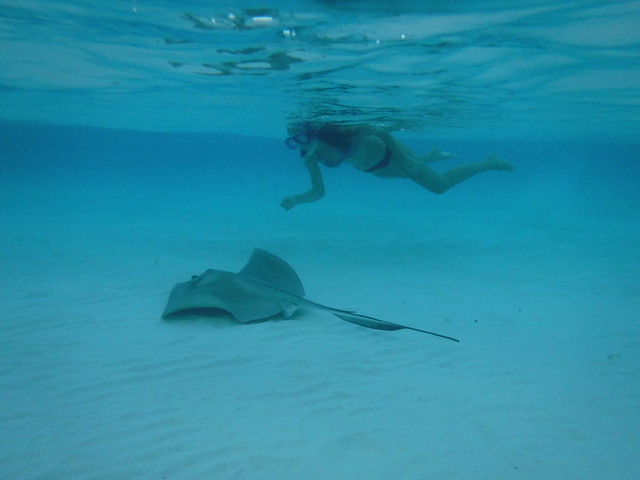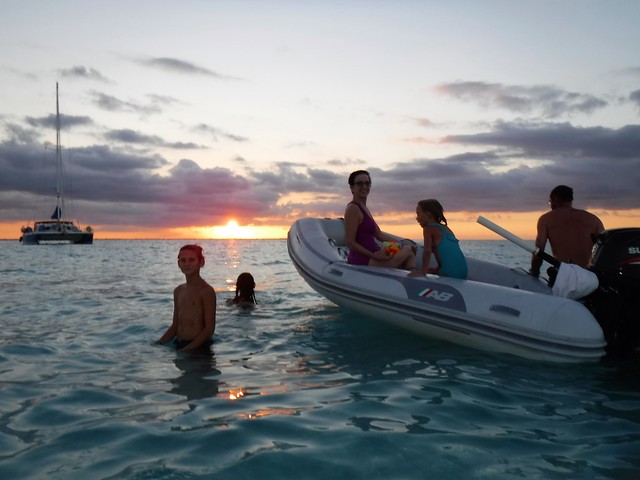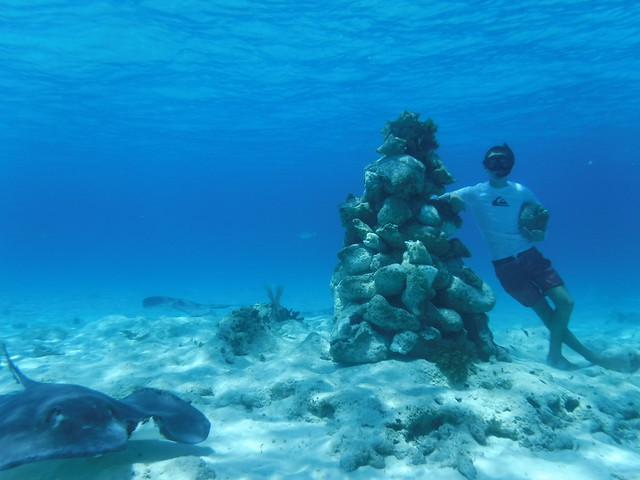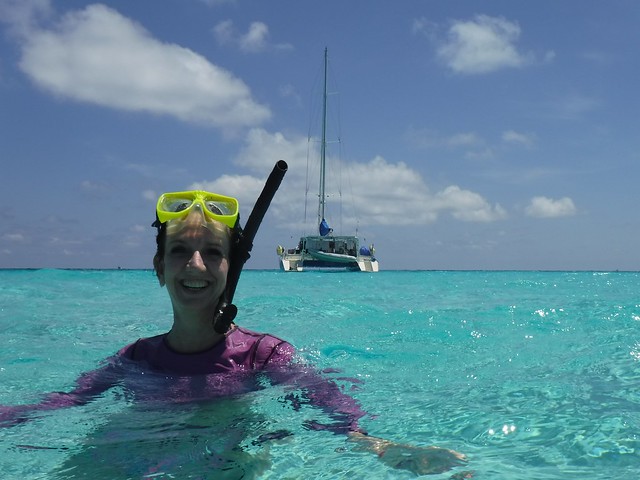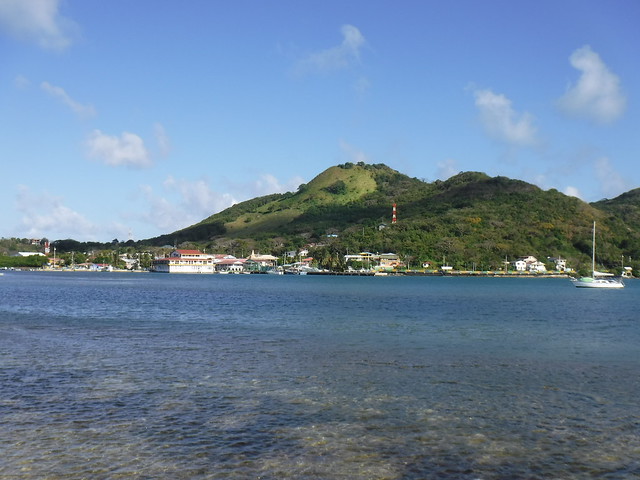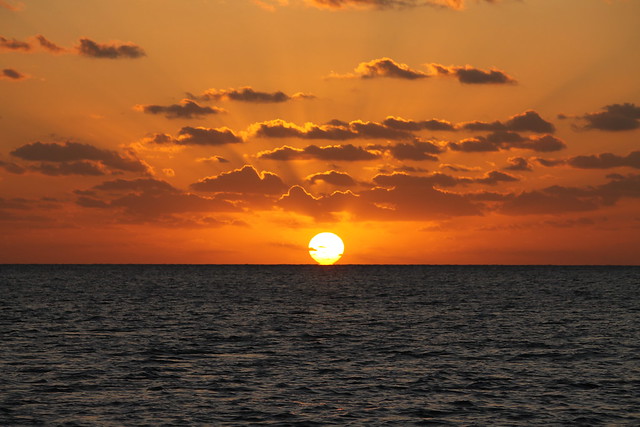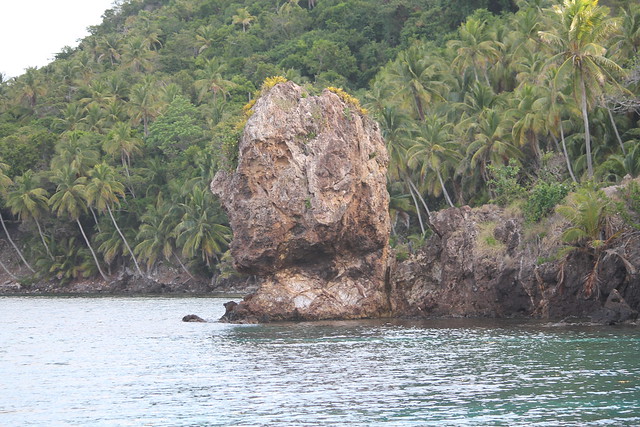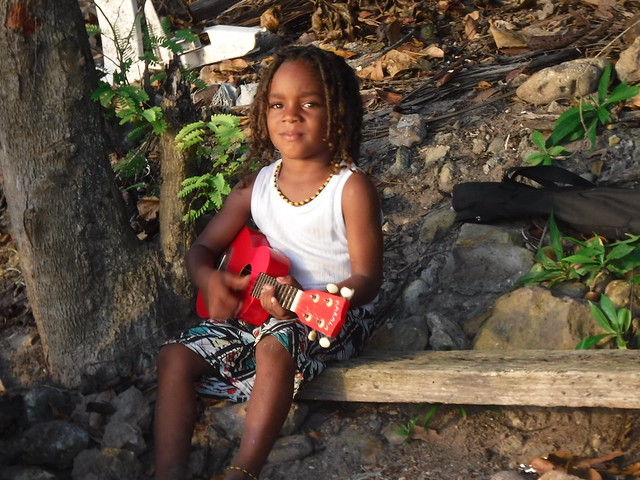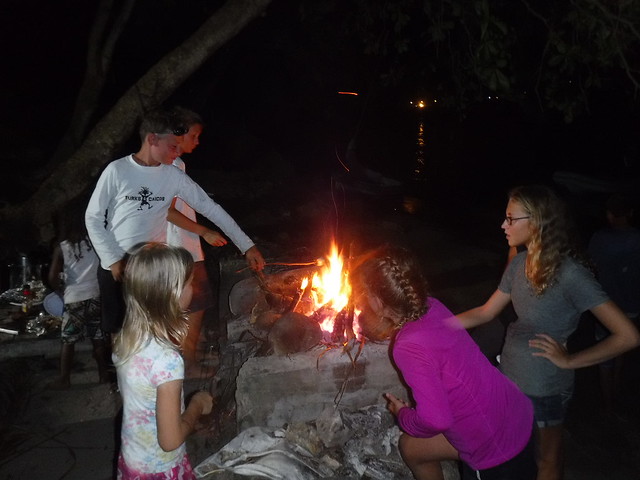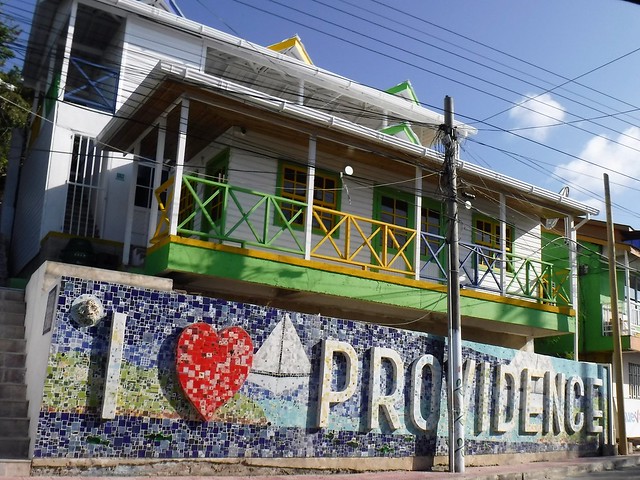As a favor to a few friends interested in traveling to Panama, I’m publishing some notes I made about our travels to supplement travel and cruising guides.
Bocas del Toro
A scattered group of islands (some volcanic and rainforest, others mangrove islets) on the western side of Panama, Caribbean side. Great place to spend hurricane season, and surfing is good in the winter/spring (swell coming from Colombia breaks on reefs/beaches). A large expat community, as well as young backpackers/travelers from all over the world. We spent 9 months here and would come back. The main islands are Isla Colon, Christobal, Solarte, Bastimentos, and Isla Popa. Bocas Town is on Isla Colon, and can be noisy, busy, and unsafe. Water taxis can be caught all the time to the islands (prices vary based on distance). Lots of tours offered loudly by water taxi drivers. Check into the country with a team of people from Customs, Immigration and Port Captain—best done by anchoring off town, or calling ahead to Red Frog and the team will come to your boat at the dock.
Marinas
Red Frog Marina (IGY)—The dockmaster, DC, is an especial friend of mine (If you go there, tell him Tanya from Take Two says hi). We plugged in here for hurricane season and had a wonderful experience. Beach a 15-minute walk away through nature-preserve. We found red frogs, oropendola birds, hummingbirds, sloths, birds of paradise, and lots of other natural beauty. Marta (from Colombia) is the massage therapist at the spa and she is a treasure. Uchi does laundry for $6.50 per load, wash/dry/fold…cheaper than doing it yourself because the dryers require two runs. Good hiking/walking on resort roads. Zipline on property—get Amanda or DC to try and get you a good deal. Beach club open—and it has a pool! I heard Playa Tortuga was damaged in swells this past winter, but Red Frog Beach is also lovely. Good tacos at Nachyomama and good food/drinks at Palmar. Salina Hostel is on the Red Frog Property. The restaurant there is also decent. Good for happy hour drinks and ping pong! The marina runs a free shuttle to town for shopping, but also has a small market with a deli, ice cream, some produce and a wide variety of supplies. Less known is the Salina Hostel shuttle to town, which runs several times each day. You have to buy a ticket ($5) and get the schedule at Salina Red Frog or Salina Bocas, but it’s a lot cheaper than a water taxi, which can run between $10-$20 each way, depending on time of day, number of passengers, and mood of the driver.
Agua Dulce marina is run by our friends Bobby and Shirlene (they have 3 homeschooled kids). They have laundry, bathrooms/showers, water and power, and a workshop (complete with sail loft). Bobby is the Suzuki dealer for the area and he knows how to get things. Shirlene is a nurse, and besides homeschooling the kids, she helps take care of the Ngobe villagers who come to her for help, hosts volunteer groups, and teaches English in the village school. Ellie, their oldest daughter, often takes people kayaking or hiking to the bat caves.
Restaurants
Notoriously unpredictable…sometimes great and other times not great. Lots of staff turnover. Many inexpensive restaurants in Bocas Town for backpackers/surfers. Here are some of our faves.
Buena Vista has a nice spot on the water. Kelly, the owner, is a friend of mine, and it’s a really nice place for a cool drink and lunch (burgers and nachos are good). Also, it’s hard to find a place to park a dinghy in town, and Kelly will let you load groceries there as long as you stop in for a bite or drink.
El Ultimo Refugio is also typically very good. A little place across the street, Tutty and Fish has good ceviche, and also sells a wide variety of meats and sea foods.
Casbah has Mediterranean food and tapas. Also good.
La Pirata is predictably good Panamanian food.
Go to the Golden Corral for ice cream and try the Grape-Nut flavor—no joke—it’s the best!
Our favorite date night was at La Loma Jungle Lodge on Bastimentos. We recently heard that Henry and Margaret sold it, so we don’t know what it’s like now.
Don’t miss Ernie’s (Los Amigos) in Tierra Oscura (connected to Dolphin Bay)…really good fried chicken at lunchtime or eggs Benedict on Sunday mornings!
Shopping
Note: There is a storage room in the turquoise building by the taxi dock, but you have to ask about stashing something there. Sometimes they charged me a dollar or two to put bags there.
Isla Colon is the best grocery store in town, and not far from the water taxi dock. Felix, the Chinese guy who runs the store, can get you things that you might not see on the shelves, just ask!
Same goes for Lorelei at Super Gourmet, where prices are a little higher, but she carries specialty items and has the best deli in town. (And the best whole-bean Panamanian coffee—look for the package with the blue butterfly.) A perfect lunch stop, too, with fresh sandwiches, soups, and salads. Across from Super Gourmet is a good veggie stand.
Best bread in Panama is found at the Panaderia Allemana (German bakery)…it’s a misnomer, as the owner is Itailian, and carries a variety of breads and some imported Itialian pastas and specialty items. Two doors down from the bakery (which also serves breakfast and lunch), there’s a fruit and veggie stand run by a very sweet family from Chiriqui province (small green building). Ask Staci what day the truck is coming and you’ll get lots of fresh veggies and fruit at a good price.
Toto is like a Walmart–it has a little bit of everything.
Richard owns three stores: the 3R “Mall” has a wide variety of items and is air conditioned. Richard’s Ferreteria/Maderas is nearby, and Richard can find you almost anything. He was just opening a new grocery store across the street when we left, with water access!
Things to do
Green Acres Chocolate Farm Tour
Horseback riding on Cristobal with Cowboy Dave’s Horseback Tours (highly recommended)
Jungle ziplines at Red Frog Resort
Surfing at Black Rock or Bluff Beach, classes, rentals, and tours at Bocas Surf School
Turtle Conservancy night tour on Bluff Beach
Snorkeling at Zapatillas Marine Conservancy, Hospital Point, or Coral Cay
Smithsonian Tropical Research Institute visitor’s center
Beach day at Bluff Beach, Red Frog Beach, or Starfish Beach
Wildlife Boat Tours: birding at Isla Pajaros (nesting Tropic Birds), Sloth Island, Monkey island
ATV trails with Flying Pirates
Movie theater in town with private air-conditioned viewing rooms
Art or cooking classes for kids (Christin Fjeld) and sometimes a mom’s night out wine-and-paint
Shipping
Lots of expats means lots of things coming in from the US and Canada. You can ship things to the Mailboxes etc., order things from a guy named Bill Kruger who gets containers from the U.S., or go through David Pang in Panama City, who can send things by plane to the Bocas airport. You can also take a bus from Almirante to Changinola or David (you take a water taxi to Almirante) to get things. David has a Price Mart, Novey (household goods), Conway (like Target), and Do-It Center (like Home Depot). There are two sisters, Toby and Lola, who can get things sent from David to Bocas.
Cruising
Islands and anchorages everywhere and you feel like you have the place to yourself. Water mostly clean and clear (sometimes jellies, depends on how closed-in the area is). Holding good in sand or mud, but usually deep. We looked for 30-foot depths. Anything shallower, and you can see the water shoaling to just a few feet. (You’re anchoring in underwater valleys, trying to stay off the mountaintops.) Good snorkeling and kayaking in and around mangrove islands. Dolphin Bay, Tierra Oscura, Sloth Island, Monkey Island, Bastimentos (bays on the south side), Loma Partida (near Isla Popa), leeward side of Cristobal, Starfish beach (leeward side of Isla Colon…after the afternoon crowds leave and in the morning before they show up is best)…and many more to explore! You may occasionally get Ngobe Indians paddling up in cayucos (dugout canoes) and asking for rice or sugar. Sometimes they sell/trade coconuts, produce, or fish.
Travel
Flights leave Bocas several times a day, connecting to Panama City or San Jose, Costa Rica. Jay flew to Boston and made it in one day. When we traveled as a family, the boat was safe at Red Frog. It would be safe at Agua Dulce, too. It’s pretty easy to take bus trips, too, and the price includes the water taxi to the mainland. We took the Hola Panama shuttle to Boquete, (Volcan Baru area, near the cloud forest) and the Carib Shuttle to Costa Rica. Both experiences were very good. We recommend Mount Totumas if you want to see the cloud forest of Panama and do some hiking. We rented their cabin, bought groceries and cooked in several nights. But the food at the lodge is amazing, too. They grow a special variety of high-altitude coffee (and roast it themselves). It is the best coffee I have EVER tasted. Jeff will personally take you hiking and show you all kinds of things. We saw a dozen different kinds of hummingbirds alone. In Boquete, we like the suspended bridges hike at Tree Trek, and a field trip to Boquete Bees to learn about pollinators in Panama, taste honey, and to see the butterfly garden. The boys did some rock climbing with professionals on the basalt wall, and we also rented a car one day and went to Cangilones de Gualaca…google it—it was a memorable day! You can also do coffee tours in Boquete.
Downsides
The heat and the bugs (and sometimes the rain)! The mosquitos aren’t the problem, it’s the chitras or sand flies. They ate me alive, but I was just itchy and have no residual effects. On the windward side of the islands, it can be choppy and uncomfortable, but cooler; in the lee of the islands, it’s usually completely protected, but hotter and buggier. The rain is less predictable in the islands than on the mainland. Mainland Panama disappears for months beneath rain clouds, but Bocas doesn’t get regular rainy season. June and July are usually the rainiest months. Lots of overcast days, but then it’s not so hot! We loved it there, made friends, and found it hard to leave.
Shelter Bay/Colón
Sailing from Bocas
Leaving Bocas to head to central Panama, you have a favorable current, which really helps. You can take protected waters all the way to Bluefield and then go out at the entrance to the Laguna Chiriqui. The channel between the mainland and Isla Popa is wide and deep. A couple we know is building a castle/house on an isand near that channel…you might see it. A good stop on the way to Colon is an island called Veraguas. It has the most beautiful lagoon to snorkel in (Rachel calls it the mermaid lagoon) and a beach. Good in settled weather, but can be swelly. A great stop for a day or two. Another stop is a night or two in the Rio Chagres. Once you get past the shoals near the entrance (past Fort San Lorenzo on the hill), it’s very deep, and you have to look for a spot to anchor near a bend in the river where you might see 30s on the depth sounder. It is jungle and mirror-smooth water. We saw toucans, howler monkeys, caimans, and lots of wildlife. We kayaked in the little tributaries and loved it. We have been warned that sometimes they open the sluice gates on the dam when the Gatun lake level is too high, but we took the risk during sunny days and loved it.
Marinas
Shelter Bay Marina also has the nickname “Shelter Pay.” It has haulout/full-service boat yard, sail loft (although I just heard the sailmaker we knew was heading out to go cruising), workshop, mini-mart, laundry (expensive unless you do it yourself, but the machines are often busy), restaurant, pool, small hotel (handy if you haul out), boater’s lounge, palapa/picnic area, nature trails, free shuttle to Colon for shopping, and a good cruising community. It’s easy to find or become line-handlers for a canal transit. There’s a morning cruiser’s net for daily announcements, and there are always activities (like open-mic night, dominoes, etc.). Usually there are some kid boats there. The new manager, Juanjo, is a friend of ours from Puerto Rico, where he used to manage Las Palmas del Mar. He’s a good guy.
Restaurants
The restaurant at the marina It’s 5 o’clock Somewhere is pretty good. Nice spot for evening drinks and weekend events. We rarely went to town, and then only to shop at Quatro Altos. There are restaurants there, including a Dominoe’s pizza, but we were always focused on groceries and didn’t dawdle. Shelter Bay is a little isolated from everywhere else. A taxi to/from town runs $20-25, so I usually took the free bus (sign up sheet at the office).
Shopping
Quatro Altos has a large, well-stocked El Rey supermarket, a marine store, an electrical parts store, hardware store, shoe stores, and several department stores. El Rey had everything I needed, but the bus runs into Colon to another shopping area. Shopping trips take several hours because the bus has to cross the canal by ferry or over the locks, which means it has to wait for shipping traffic (can be as long as an hour each way). The first time, it’s amazing, but after a few times, it just means a long bus ride. The driver, Mauricio, is very prompt and cannot wait for late-comers (the bus is also the employee shuttle). He appreciates a tip occasionally.
Transportation to Panama City
Buses are cheap and good (take the express!) and often air-conditioned. Taxi or free shuttle (in the morning) will get you to the bus station. It takes about 2 hours. Sometimes the free shuttle will do a day trip to Panama City as well. A guy named Roger (Rogelio) will drive you in his van as well for about $100, and knows where to find all sorts of things. He often acts as translator as well as driver. He is now an agent for canal transit, too. Ask the marina for his number.
Downsides
We were there in November and the rain was unbelievable! I’ve never seen downpours like I saw there! There were some bugs, but it depends on the wind and location in the marina. The marina is isolated and there’s nowhere to go, but there are lots of cruiser-organized activities.
Panama City/Panama Canal
Before you go: read David McCullough’s Path Between the Seas, a fabulous read about the people who built the canal. Not a dry history book!
Transportation
We tried a little of everything; took the bus, used taxis, used Uber, and hired a driver. We even took the Panama Railroad train back to the Caribbean side (totally worth the expense as the rail runs along the canal and through the jungle—best ride ever!) Sometimes taxi drivers have no idea where things are. Uber works well. Our guide/driver is a family friend, Luis, who Jay’s parents use when they are in the city. He did a city tour with us and it was wonderful. Nice, new van with A/C. He knows when ships are transitting the canal and takes you to the Miraflores locks at the right time. His contact is +507 6536-1179 and he speaks both English and Spanish.
Shopping
You can find everything in Panama City, as long as you have a driver who knows what you’re looking for. There’s a large mall (Allbrook), Discovery Center, Novey, Do-It Center, marine stores, a place that stocks all kinds of tools and stainless steel pieces and parts. Good grocery stores, too.
Things to do
The Museo de la Historia del Canal Interoceanico in the old city is very good, but mostly in Spanish. The visitor’s center at Miraflores also has a museum (not as good) but in English and Spanish. We did both. If you only have time for one, Miraflores will do.
Lots of museums, parks, and restaurants. A hike up Ancon Hill is a must, as is an exploration of Casco Antiguo (the old city was mostly burned by the pirate Henry Morgan, so Cartagena is a better, more-intact Spanish walled city to explore). Flamenco island is nice (there are lots of anchored boats near there, and an expensive marina). There are also beaches and fishing on the Pacific side of Panama.
Restaurants
El Congrejo area of the city has restaurants of every description. Pomodoro is one of our favorites for Italian/Pizza. Casco Antiguo also has many good restaurants. The Seafood market was recommended to us many times, but we didn’t make it there.
Downsides
It’s a large, dirty city, and you have to be careful in certain areas. Taxi drivers don’t really have a mental map, so you might need to help navigate to get somewhere.
Linton Bay (Porto Lindo)/ Portobelo
About 20 minutes from Portobelo, 45 minutes from Sabanitas, an hour from Colon, and 2 hours from Panama City. A day sail from Isla Grande to San Blas. Lots of people anchor in Linton Bay or Portobelo waiting for weather to San Blas, or for a canal transit. Rains a lot of the year. For check-in check-out—Port Captain is at Linton Bay (Porto Lindo), but the immigration office is in the yellow building in downtown Portobelo.
Marinas
Panamarina is a small marina owned by French people, and they store a lot of boats for hurricane season, as well as operating a boatyard and a French restaurant. You can get there from Linton Bay via a mangrove channel, but be careful of the coral heads near the entrance!
Linton Bay Marina—Much cheaper than Shelter Bay, but fewer amenities. Under construction, and things always in flux. There is a haulout/boatyard, but nowhere comfy to stay while you’re on the hard. Veggie trucks and bread truck comes several times each week. Free water! Wifi not so great on the docks. Note: people feed the monkeys on “Monkey island”—but don’t take kids ashore! Monkeys can be aggressive…just ask Rachel ☹. The good news is that medical care at the Portobelo clinic is free for tourists! A lot of people anchor in Linton Bay, but it’s pretty rolly, with ocean swell coming into the bay. A little more protection (depending on wind) in Portobelo.
Transportation
The “chicken bus” runs along the coast (marked “Costa Arriba”) and is inexpensive. I did some ride-sharing with a friend using a taxi driver named Jack (+507 6727 8277). He lived in the U.S., so is totally bilingual. For about $100, he’ll take you to Panama City for the day and help you find things. He’s a great guy. For $40, you can go to Colon for the day, and for $20-25, to Sabanitas to grocery shop.
Restaurants
Captain Jack’s in Portobelo is very good and has a good atmosphere, excellent seafood, Asian fusion, and curry dishes
Rico Rico has the second best bread in Panama (also owned by an Italian!)
Congo Culture House in Portobelo which is part art gallery, part history museum, part local café. A great stop in Portobelo.
Shopping
Iin Sabanitas there is a new Super 99 and an El Rey grocery store. I found everything I needed there, and it wasn’t as far as Colon or Panama City.
Things to do
Explore the old fort in Portobelo, go to the Culture House museum, go to the museum and to the church of the Black Jesus. Go to the beach at Mame or Isla Grande. Surfing near Isla Grande (reef break) during swelly times of year.
Downsides
A bit far from shopping, but not hard to get to the city. The rain? The hills around there are called “La Sierra Llorada” or “crying hills.” Can be wet.
San Blas
Porvenir has immigration, but not a port captain. If you go there, you will be charged the cruising fee ($20 pp and $20 for the boat). There is a road to Panama City from Carti, but there’s a check-point on the road with officials checking paperwork. Check-in can be done in Obaldia (to the east) if arriving from/departing to Colombia, but can be expensive. Most people arrive from Colombia, hang out in San Blas for awhile, then check in once they get to Portobelo, Colon, or Bocas.
Information
San Blas Facebook group is a good source of up-to-date information. Last we heard, the road to Carti was closed and the Congreso had closed the isalnds to commercial sailing charters. A beautiful place, and nice cruising grounds, though weather (of course) always plays a factor when planning your stops. Sometimes it’s hard to find protection from wind and swell. Provision well before sailing. Anchoring fees are not expensive, and are collected by Guna officials who will give you a receipt.
Cruising
Coco Banderos are lovely, but not in swells. Coral everywhere, very beautiful (but somewhat touristy).
The Hollandes Cays are also popular, and the “Swimming Pool” is often crowded. And there’s a croc there on BBQ island.
Our favorite spots were in the West Lemmons (in the lagoon near Tiadup), where we could get internet (Moviestar) and good protection from Christmas winds, and in the Green Island Group, where there were nice beaches, excellent snorkeling, and veggie boats and fisherman coming by. Also close to Nargana, where you can get basic supplies and internet (Digicel). We avoided the crowded Green Island itself, and the local fishermen said there was still a croc in the area. They showed us places that were “safe” for our kids. We never saw a croc. Or a shark. We did catch some fish. Most of the Gunas are free-divers and are catching big fish in deeper water.
The rule is, the farther east you go, the more traditional the villages. We were welcomed in Rio Azucar by some fishermen we befriended (anyone who comes by in an ulu has been out in the hot sun for a long time and greatly appreciates a cool drink in a shady cockpit.) They sold us affordable fresh seafood and coconuts when we asked. In Rio Azucar, they have bamboo and thatch huts with satellite dishes fixed on top! We have friends who went east past all the popular island groups and said it was like stepping back in time.
The best molas are made in Machina. There are a brother-sister team that come around and speak English and Spanish. Their molas are beautiful. Venancio may welcome you to San Blas, and he markets molas from Machina (some made by him). They are of high quality, but very expensive. Lisa may also come by. She also has beautiful molas, and much more affordable. She is from Rio Sidra near the mainland, and is a popular tour guide—she can take you up a river and show you a traditional village, farms and burial grounds.
We avoided busy places and crowded anchorages and only went to deserted beaches. We stopped once in Carti to do a little shopping but didn’t enjoy the experience.
Downsides
Provisioning is not difficult, just limited to rice, beans, fish and produce. Perhaps this is not a downside…but if you like your butter and cheese, stock up! The mola vendors can be a little intense, knocking on the side of your boat and unloading all their wares in your cockpit, but I tried to buy gifts for people back home a little at a time and spread the purchases over many people. Some cruisers complain about anchoring fees, but we did not find them to be excessive. If you’re looking for an escape from civilization and tranquil, beautiful islands, San Blas is wonderful. If you need internet (for work or school, for example!) then San Blas will present some unique challenges.




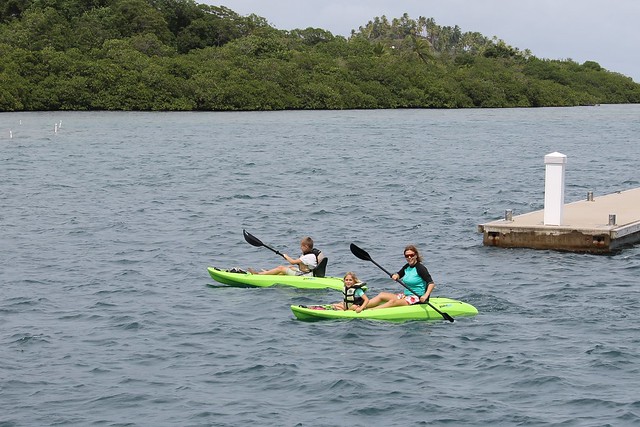

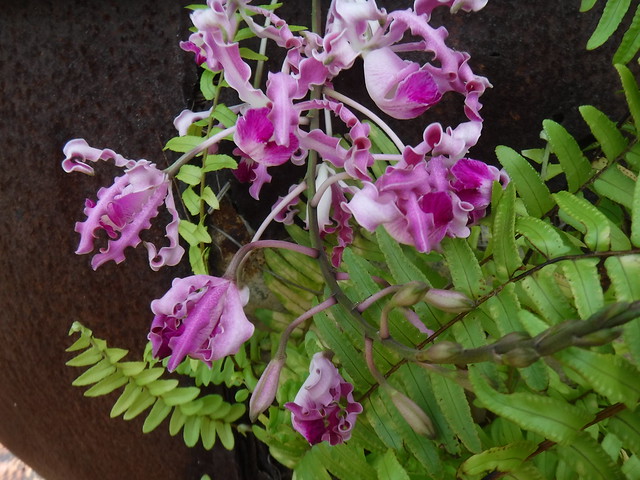
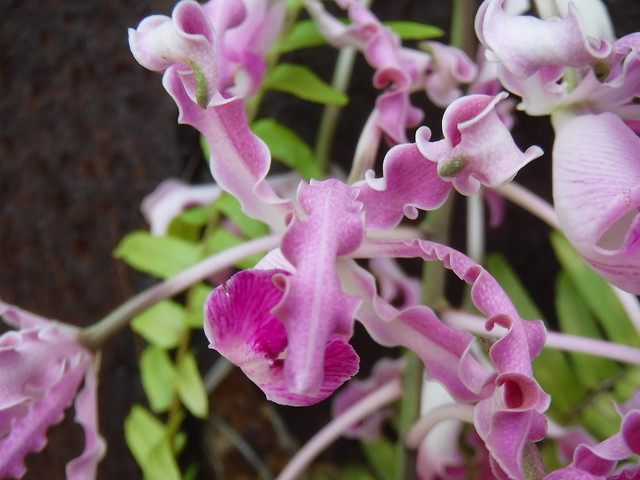
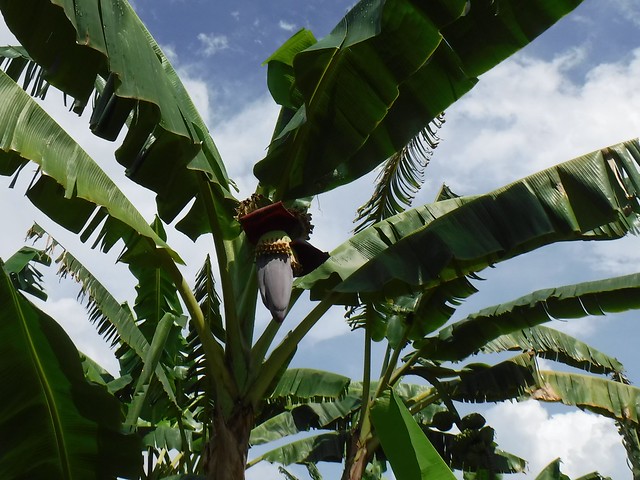
![Baby Bananas]](https://farm2.staticflickr.com/1750/41940765025_03e8a50f46_c.jpg)
